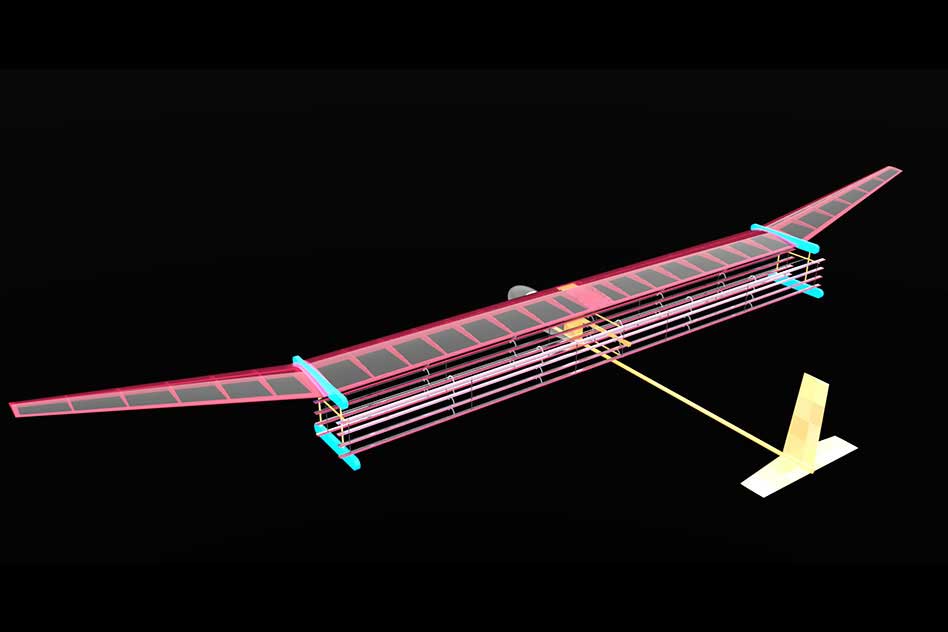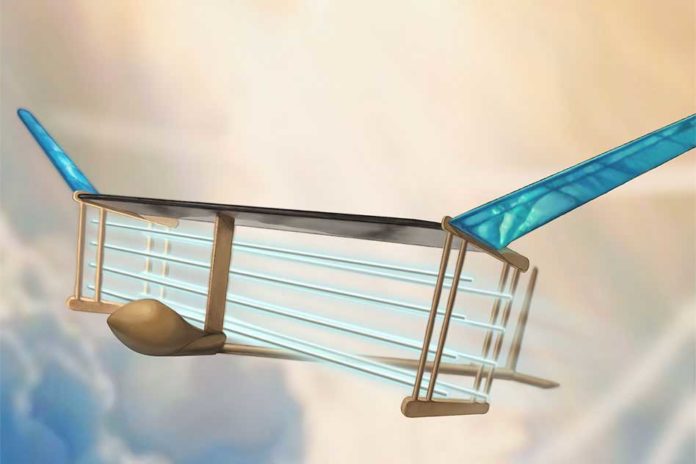For the first ever time, MIT scientists have developed the first-ever plane with no moving parts. This radical approach towards flying is in the form of a small, lightweight and virtually noiseless airplane.
Instead of propellers or turbines, the light aircraft is powered by an ionic wind — a silent but mighty flow of ions that are produced aboard the plane, and that generates enough thrust to propel the plane over a sustained, steady flight.
The aircraft, called Version 2 EAD Airframe, or V2, weighs only 5.4 pounds (2.45 kg) with a wingspan of 16-1/2 feet (5 meters). And unlike turbine-powered planes, the aircraft does not depend on fossil fuels to fly.

Image: MIT Electric Aircraft Initiative
Steven Barrett, associate professor of aeronautics and astronautics at MIT said, “This is the first-ever sustained flight of a plane with no moving parts in the propulsion system. This has potentially opened new and unexplored possibilities for aircraft which are quieter, mechanically simpler, and do not emit combustion emissions.”
Electrical field strength near an array of thin filaments called emitters at the front of the wing ionizes air, meaning electrons are removed and charged molecules called ions are created. These positively charged ions are attracted to negatively charged structures on the plane called collectors. As they move towards the collectors, the ions collide with air molecules, transferring energy to them. This creates a flow of air that gives the plane its thrust.
The team, which also included Lincoln Laboratory staff Thomas Sebastian and Mark Woolston, flew the plane in multiple test flights across the gymnasium in MIT’s duPont Athletic Center — the largest indoor space they could find to perform their experiments. The team flew the plane a distance of 60 meters (the maximum distance within the gym) and found the plane produced enough ionic thrust to sustain flight the entire time. They repeated the flight 10 times, with similar performance.
Barret said, “This was the simplest possible plane we could design that could prove the concept that an ion plane could fly. It’s still some way away from an aircraft that could perform a useful mission. It needs to be more efficient, fly for longer, and fly outside.”
The plane, defined as a solid-state machine because it has no moving parts, was built to be as light as possible using materials like carbon-fiber, balsa wood, a plastic called polystyrene, shrink-wrap plastic and Kevlar.
